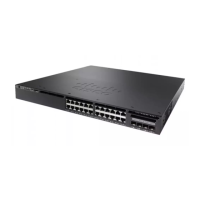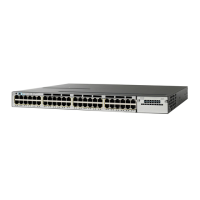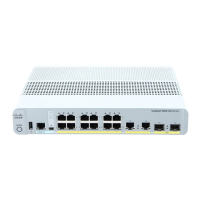If both ends of the line support autonegotiation, we highly recommend using the default autonegotiation
settings. If one interface supports autonegotiation and the other end does not, configure duplex and speed on
both interfaces, and use the auto setting on the supported side.
If the speed is set to auto, the switch negotiates with the device at the other end of the link for the speed setting
and then forces the speed setting to the negotiated value. The duplex setting remains as configured on each
end of the link, which could result in a duplex setting mismatch.
You can configure the duplex setting when the speed is set to auto.
Changing the interface speed and duplex mode configuration might shut down and reenable the interface
during the reconfiguration.
Caution
You can verify your setting by entering the show interfaces privileged EXEC command.
Examples
This example shows how to configure an interface for full-duplex operation:
Device(config)# interface gigabitethernet1/0/1
Device(config-if)# duplex full
Command Reference, Cisco IOS XE Everest 16.5.1a (Catalyst 3650 Switches)
35
duplex

